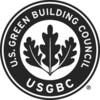Hi! I'm working on a project that includes a large number of "pedestrian streets" and I can't seem to categorize them in a consistent way with respect to the various LEED ND prerequisites and credits. Basically, the "pedestrian streets" are rights-of-way that will be privately built and then dedicated to public use. They will allow pedestrians and bicycles but not motor vehicles. They are nearly always wider than 10 ft, and at many points will be wider than 12ft. Some buildings will face pedestrian streets only. Most will have a "regular street" front facade and some form of private or semi-public outdoor space facing the "pedestrian street" side. Functionally, these "pedestrian streets" are mid-block cut-throughs that behave like paseos, but the LEED ND Reference Guide mentions that "paseos" can't be wider than 12 feet. One might count them as an alley, but they won't allow motor vehicles, which is part of the "alley" definition in the Reference Guide. Also, they won't necessarily serve the usual alley functions of services and delivery... The definition for a "street" in the ND reference guide seems like it could include the "pedestrian street", but frequent references are made in various other parts of the guide to a distinction between "streets" and "nonmotorized rights-of-way" (NPDp3 and NPDc6). So should these count as streets, alleys or paseos? Thanks, Daniel Costantino
You rely on LEEDuser. Can we rely on you?
LEEDuser is supported by our premium members, not by advertisers.
Is the purpose of this question to determine if it is possible to include the described street design in connectivity/intersection calculations? If so, chapter in reference guide on Getting Started could resolve the puzzle.
Hi Gurpreet!
Thanks for your interest. The issue at hand is building frontage and distance from the street (NPD Credit 1 requirements a, b and c).
The basic "block" concept of the project is the following:
1. A block is square and delimited by 4 regular streets. It is crossed by 2 mid-block "pedestrian streets".
2. Building frontages and entrances face the regular street, and have short setbacks or no setback from regular streets.
3. Mid-block "pedestrian streets" are mostly bordered by courtyards, gardens, private back entrances etc.
4. Occasionally, a building will be placed to front onto a "pedestrian street".
In case (3), buildings have good street frontage on the regular street but are set back a fair bit from the "pedestrian street". Will that affect my project's ability to claim that we have satisfied NPD credit 1 requirements (a) and (b)?
What is nature of the project, mixed use commercial/residential?
Thanks!
Daniel, if the pedestrian ROWs are addressable for mail, they're "streets," and more specifically "non-motorized streets" wherever that term appears. Alternatively, you could submit a CIR seeking a 'paseo' exception for widths wider than 12 ft.
Eliot
Daniel, I didn't see your follow-up NPDp1 question when I wrote my first response. If your "ped streets" are, for purposes of ND, 'non-motorized streets,' then: NPDp1 (a) isn't really affected since that's about bldg entries; (b) is only affected if you opt to count the ped streets toward the 15% BH-SW requirement (note that non-motorized streets must hit a ratio of 1:1, not 1:3); (c) is ok because your entire street is a sidewalk; and for (d) you have to include the ped streets when making the 20% calculation because the requirement doesn't distinguish motorized vs non-motorized.
Eliot
Eliot
Gurpreet: This is a large mixed-use project.
Eliot: Thanks for the advice! I hesitate about posting a CIR for a paseo as I've heard that paseos have not been included in the LEED ND 2012 drafts. Also, as you correctly point out, NPD prerequisite 1 isn't too much of a worry here. However, I'm not sure what to make of a,b, and c in NPD *Credit* 1. Do you have any advice?
Thanks so much to both of you,
Daniel
Hi, Daniel. With respect to your question about NPD Credit 1, the requirements of a, b, and c apply to all streets. It's important to be consistent between credits. If you determine that your non-motorized streets are streets as defined by LEED-ND (and explained by Eliot above), then you should treat them as streets for NPD Prerequisite 1 and Credit 1.
Thanks, Meghan, that clears up the applicability of the rule nicely.
Add new comment
To post a comment, you need to register for a LEEDuser Basic membership (free) or login to your existing profile.


